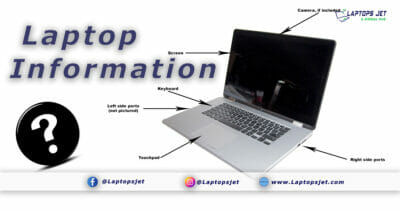How to Make a Stolen Laptop Untraceable

Imagine the sinking feeling when you discover that your beloved personal device has been snatched from your possession, leaving you feeling vulnerable and violated. In today’s interconnected world, a stolen laptop or tablet can expose a wealth of personal information, putting your privacy and security at risk. But fear not, for there are ways to make your pilfered electronic device vanish from the radar of the opportunistic thieves and cybercriminals who seek to exploit your digital footprint.
With the ever-increasing sophistication of tracking technologies, it is paramount to stay one step ahead in the battle against would-be thieves. It is critical to arm yourself with knowledge and implement proven strategies to ensure your stolen device remains untraceable, unreachable, and inaccessible to the prying eyes of those who wish to compromise your personal data.
The measures we present here have been extensively researched and endorsed by cybersecurity experts who specialize in thwarting unauthorized access and digital surveillance. By employing these ingenious countermeasures, you can significantly increase the chances of keeping your stolen device out of the reach of malicious individuals, safeguarding your privacy, and restoring your peace of mind.
Enable Full Disk Encryption to Protect Your Data
Safeguarding the confidentiality of your sensitive information is crucial in today’s digital age. One effective way to achieve this is by enabling full disk encryption on your laptop. By encrypting the entire contents of your hard drive, you can make sure that even if your laptop gets stolen, unauthorized individuals will not be able to access your data.
Full disk encryption provides an extra layer of security by scrambling the data stored on your laptop’s hard drive and making it unreadable without the decryption key. This means that even if someone manages to gain physical access to your device, they won’t be able to retrieve any valuable information unless they have the necessary encryption key.
Enabling full disk encryption is relatively easy and can be done using the built-in encryption tools provided by your operating system. Both Windows and macOS offer native encryption solutions – BitLocker and FileVault, respectively. These tools allow you to encrypt your entire hard drive with just a few simple steps.
Once you’ve enabled full disk encryption on your laptop, you can have peace of mind knowing that your data is protected even if your device falls into the wrong hands. It provides an essential safeguard against unauthorized access to your personal files, financial information, and other confidential data.
- Encrypting your data prevents potential identity theft.
- Full disk encryption helps comply with data protection regulations.
- It ensures the security of sensitive business information.
- Enabling encryption is a proactive step towards protecting your privacy.
- If your laptop gets stolen, your data remains inaccessible.
- Encryption is a powerful deterrent against data breaches.
In conclusion, enabling full disk encryption is a crucial step in protecting your data and ensuring the privacy of your information. By encrypting your laptop’s entire hard drive, you can make your data inaccessible to unauthorized individuals, safeguarding it from potential theft or misuse. Take advantage of the encryption tools provided by your operating system and enjoy the peace of mind that comes with knowing your sensitive information is secure.
Install a Reliable Anti-Theft Software
Protecting your valuable laptop from theft is of utmost importance in today’s digital age. To ensure the safety of your device and invaluable data, installing a robust anti-theft software is paramount. This software provides an added layer of security, making it challenging for potential thieves to trace your laptop, increasing the chances of its recovery, and safeguarding your personal and professional information.
Enhanced Security Measures
By installing a reliable anti-theft software, you gain access to an array of enhanced security measures tailored specifically for laptop protection. These measures may include geo-location tracking, remote locking, and data encryption, among others. The stealth mode functionality of the software also prevents unauthorized access, with robust password protection ensuring that only you can access your device.
Increased Chances of Retrieval
In the unfortunate event of your laptop being stolen, a trustworthy anti-theft software significantly increases the chances of its safe retrieval. The software’s tracking capabilities enable you to monitor the location of your laptop remotely, aiding law enforcement agencies in their recovery efforts. Additionally, some programs even provide the option to capture images or record audio surreptitiously, which can help in identifying the perpetrator and recovering your device.
A reliable anti-theft software acts as a crucial deterrent against theft while providing peace of mind. It complements other security measures you may have in place, such as physical locks or encryption, ensuring comprehensive protection for your laptop. Remember, prevention is always better than cure, and investing in a reputable anti-theft software will go a long way in safeguarding your valuable laptop and invaluable data.
Set Up Remote Tracking and Wiping Options
Ensuring the safety of your laptop after it has been stolen is vital. One way to protect your sensitive data and increase the chances of recovering your laptop is by setting up remote tracking and wiping options.
Enable Remote Device Management:
By enabling remote device management, you can track the location of your stolen laptop and take necessary actions to protect your data remotely. This feature allows you to monitor the activity of your device and potentially geolocate it using GPS technology.
Install Tracking Software:
Installing tracking software on your laptop can significantly increase the chances of recovering it. These software applications act as hidden agents, enabling you to remotely track the whereabouts of your stolen laptop and retrieve it with the help of law enforcement if possible.
Use Remote Wipe Feature:
In case you are unable to recover your stolen laptop and have sensitive data stored on it, utilizing the remote wipe feature can safeguard your information. This option allows you to erase all the data on your laptop remotely, ensuring that it does not fall into the wrong hands.
Set Up Notifications:
Configuring notifications on your laptop will notify you of any suspicious activity, such as the laptop being connected to the internet or a new user logging in. These alerts can help you take immediate action and aid in identifying the location of your stolen laptop.
Register Your Laptop:
Registering your laptop with the manufacturer or a reputable third-party service can provide an added layer of protection. This enables you to report your laptop as stolen, which can result in authorities being notified and potential recovery efforts being initiated.
By setting up remote tracking and wiping options, you can enhance the security of your stolen laptop, minimize the risk of data loss, and improve the chances of retrieving it.
Use Strong Passwords and Enable Two-Factor Authentication
Enhancing the security of your digital devices is of paramount importance in today’s interconnected world. By employing robust security measures such as utilizing strong passwords and enabling two-factor authentication, you can significantly decrease the risk of unauthorized access to your personal information.
When it comes to selecting passwords, it is crucial to opt for strong and unique combinations that are difficult to guess or crack. A strong password typically comprises a mixture of uppercase and lowercase letters, numerals, and special characters. Avoid using easily guessable information such as common personal details, popular phrases, or sequential numbers, as these can be vulnerable to brute-force attacks or dictionary-based password guessing.
Furthermore, enabling two-factor authentication (2FA) adds an additional layer of security to your accounts by requiring users to provide a second piece of evidence, typically in the form of a code or a verification prompt, in addition to their password. This ensures that even if someone manages to obtain your password, they would still need physical access to your secondary device, such as a smartphone or a registered email, to gain entry.
Implementing 2FA varies depending on the platform or service you are using. Some popular methods include SMS-based authentication, where a time-sensitive code is sent to your phone, or the use of dedicated authentication apps like Google Authenticator or Authy. By taking advantage of these additional steps, you can significantly improve the security of your accounts, making it harder for potential attackers to gain unauthorized access.
In conclusion, using strong passwords and enabling two-factor authentication is vital for bolstering the security of your digital devices. By meticulously crafting strong passwords unique to each account and implementing 2FA, you can thwart unauthorized access attempts and mitigate the potential risks associated with an online breach.
Avoid Connecting to Unsecured Wi-Fi Networks
When it comes to using your laptop and connecting to the internet, it is important to be cautious, especially when it comes to Wi-Fi networks. Connecting to unsecured Wi-Fi networks can pose serious risks to the security and privacy of your laptop and personal information. In order to protect yourself and your device, it is crucial to avoid connecting to unsecured Wi-Fi networks altogether.
Unsecured Wi-Fi networks refer to Wi-Fi networks that do not require any form of authentication or password to connect. These networks are often open to anyone and everyone, making them vulnerable to hackers and cybercriminals. When you connect to an unsecured Wi-Fi network, you are essentially exposing your laptop to potential threats and risks.
Hackers can easily intercept the data that you send and receive over these networks, including personal information such as usernames, passwords, and credit card details. They can also inject malware or malicious software into your laptop, potentially compromising its security and integrity. It is therefore important to exercise caution and prioritize the use of secure, password-protected Wi-Fi networks.
To avoid connecting to unsecured Wi-Fi networks, it is recommended to always use Wi-Fi networks that are password-protected and encrypted. These networks require a password to connect, ensuring that only authorized individuals can access them. Additionally, look for networks that use WPA2 encryption, as this is currently considered the most secure encryption standard.
It is also advisable to be wary of public Wi-Fi networks, such as those found in cafes, airports, or hotels. Although these networks may require a password to connect, they are often shared by multiple users and can still be vulnerable to attacks. If you need to use public Wi-Fi, consider using a virtual private network (VPN) to create a secure and encrypted connection between your laptop and the network.
By avoiding unsecured Wi-Fi networks and prioritizing the use of secure, password-protected networks, you can significantly reduce the risks associated with connecting to the internet. Remember to always be cautious and proactive when it comes to protecting your laptop and personal information from potential threats and cyber-attacks.
Keep Your Laptop’s Software and Firmware Updated
Ensuring that your laptop’s software and firmware are up to date is crucial for maintaining its security and protecting your personal information. Regular updates provide necessary patches, bug fixes, and enhancements that keep your laptop running smoothly and safeguard it against potential vulnerabilities and threats.
Why is Updating Software and Firmware Important?
By regularly updating your laptop’s software and firmware, you can benefit from various advantages:
- Enhanced Security: Updates often address known security vulnerabilities and provide patches that protect your laptop from malware, viruses, and potential hacking attempts. Without these updates, your laptop could be at higher risk of being compromised.
- Bug Fixes and Stability: Software and firmware updates usually include bug fixes, which can improve the stability and performance of your laptop. These updates address issues and glitches that could impact your laptop’s functionality and user experience.
- New Features and Functionality: Updates can introduce new features, tools, and functionality that enhance your laptop’s capabilities. By keeping your software and firmware up to date, you can ensure that you have access to the latest technology and advancements.
- Compatibility: Updates also ensure compatibility with newer software applications and hardware devices. Without updating, you may encounter compatibility issues that could hinder the performance and usability of your laptop.
How to Update Software and Firmware
To keep your laptop’s software and firmware updated, follow these steps:
- Enable Automatic Updates: Most operating systems and software applications offer automatic update settings. Enable this feature to receive regular updates without manual intervention. Automatic updates ensure that your laptop is continually protected and up to date.
- Check for Updates Manually: In case automatic updates are not enabled, manually check for updates regularly. Operating systems, antivirus programs, web browsers, and other software usually have built-in update functionalities. Visit their respective websites or go to the settings/preferences menu to find and install available updates.
- Update Firmware: Firmware updates, which are specific to your laptop’s hardware components, can improve performance and add new features. Check your laptop manufacturer’s website or support page for firmware updates. Follow the provided instructions to download and install the latest firmware version for your laptop.
- Keep Drivers Updated: Device drivers are crucial for the proper functioning of hardware components. Regularly update your drivers to ensure compatibility and optimal performance. You can usually find driver updates on the manufacturer’s website or through the device manager on your laptop.
Remember, keeping your laptop’s software and firmware updated should be part of your regular routine. By doing so, you can significantly reduce the risk of security breaches and enjoy a more secure and efficient computing experience.
Question and answer: How to make a stolen laptop untraceable
How can you use an IP address to track the location of a lost or stolen laptop?
If a laptop is lost or stolen, the IP address can sometimes be used to track its location. If you have location tracking software installed, such as “Find My Device” for Windows or macOS, it may provide the current IP address when the laptop connects to the internet. This information can be shared with authorities to help locate the device.
What are some good laptop options for small businesses that prioritize security?
For small businesses that prioritize security, Dell’s business laptops like the Latitude series or the MacBook Pro with the Apple T2 security chip are excellent choices. These laptops offer advanced security features such as hardware encryption, fingerprint reading, and additional software security measures designed for business use.
How can you disable location tracking on a MacBook Pro?
To disable location tracking on a MacBook Pro, go to System Preferences, select Security & Privacy, and then click on the Privacy tab. Here, you can uncheck the box for “Enable Location Services” or selectively disable location services for specific apps.
What steps should you take if your laptop is reported stolen?
If your laptop is reported stolen, immediately notify local law enforcement with your laptop’s serial number and any tracking information available. Contact your service provider to report the theft and see if any location tracking services are enabled. Additionally, change all passwords for accounts accessed from the laptop to prevent unauthorized access.
How can you secure your laptop to protect sensitive information like your Social Security number?
To secure your laptop and protect sensitive information such as your Social Security number, use strong, unique passwords for all accounts and enable two-factor authentication where possible. Install reputable antivirus software and ensure your firewall is active. Consider using full-disk encryption to secure your data in case the laptop is lost or stolen.
What are the best ways to find a lost or stolen laptop using Linux OS?
One of the best ways to find a lost or stolen laptop running Linux OS is by using software like Prey or installing the “Find My Device” feature through third-party applications. These tools can help track the laptop’s location, take snapshots using the laptop’s camera, and even remotely lock the laptop to protect your data.
How do you find the serial numbers on desktop and laptop computers?
To find the serial number on a desktop or laptop computer, check the back or bottom of the device for a sticker that typically lists the serial number. For devices where the sticker is not visible or accessible, the serial number can often be found within the device’s BIOS settings or system information through the OS interface.
Why might a user agreement be important when setting up new computer software and hardware?
A user agreement is important when setting up new computer software and hardware because it outlines the terms of use, privacy policy, and what you are agreeing to by using the software. It can include licensing details, user responsibilities, warranty information, and disclosures about how your data may be used or shared with third parties.
What steps can individuals take to ensure they’re still in compliance with app permissions on their devices?
Individuals should regularly review app permissions in their device settings to ensure they are still comfortable with the permissions granted. Limit permissions to only those necessary for the app’s function. Regularly updating your software also ensures that you benefit from the latest privacy protections included in updates.
How can many companies enhance cybersecurity measures to protect against threats?
Many companies can enhance cybersecurity by conducting regular security audits, providing cybersecurity training to employees, implementing strict access controls, and using multi-factor authentication. Keeping all systems updated and deploying advanced threat detection tools also strengthen defenses against cyber threats.



